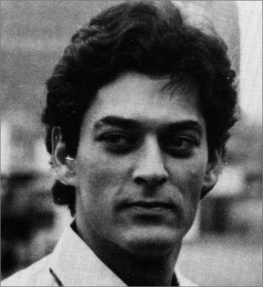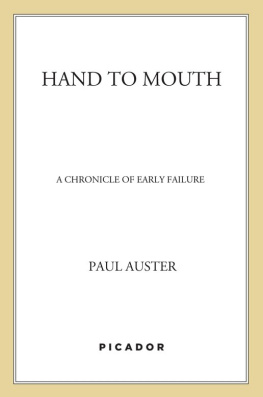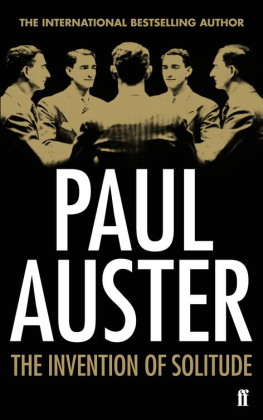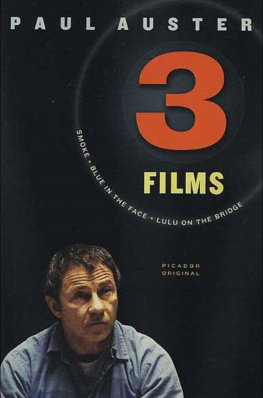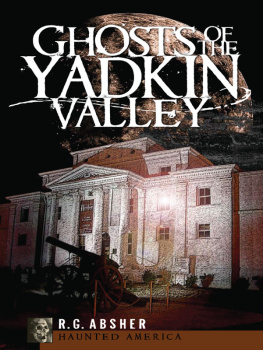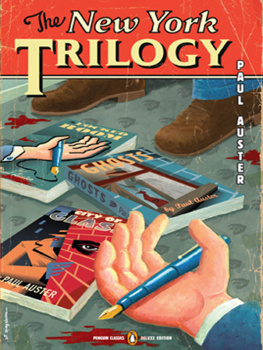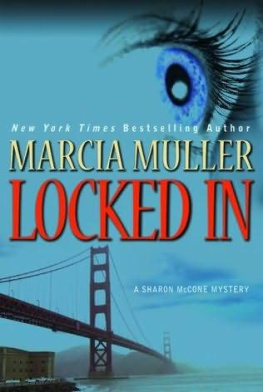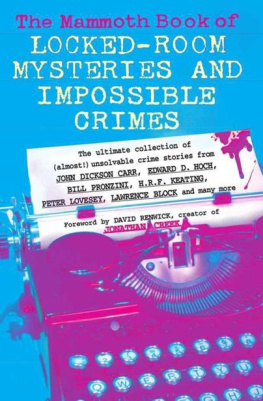Paul Auster
The New York Trilogy
city of glass
ghosts
the locked room
Introduction by luc sante
Praise from Around the World for The New York Trilogy
By turning the mystery novel inside out, Auster may have initiated a whole new round of storytelling.
The Village Voice (USA)
In his vivid modern New York the energies of literary creation are brought vitally alive, in a great American tradition.
The Sunday Times (England)
A stunning, hypnotic book Austers virtuosic storytelling achieves a tone at once passionate and detached, and the result is as curious as it is convincing.
The Glasgow Herald (Scotland)
One of the great revelations of American literature in recent years Auster has talent to burn.
LExpress (France)
Paul Auster is a writer of rare intensity. El Correo Gallego (Spain)
A breathtakingly intense and nerve-wracking book, a game of life and death This is strong stuffhold onto your seats.
Elstra Bladet (Denmark)
Paul Austers taut and remarkable prose works have enriched the American literary tradition.
De Groene Amsterdammer (Holland)
Auster is one of the most inventive writers of his generation.
Corriere della Sera (Italy)
Paul Auster has written a sublime and clear-as-glass book, a book of almost frightening transparency and openness, a crystal that refracts light into colors that have rarely been seen before. Jan Kjaerstad (Norway)
penguin classics deluxe edition
THE NEW YORK TRILOGY
PAUL AUSTER is the author of the novels The Brooklyn Follies, Oracle Night, The Book of Illusions, Timbuktu, Mr. Vertigo, Leviathan (awarded the 1993 Prix Medicis tranger), The Musicof Chance (nominated for the 1991 PEN/Faulkner Award), MoonPalace, and In the Country of Last Things. He has also written two memoirs (The Invention of Solitude and Hand to Mouth), a collection of essays, and a volume of poems, and edited the book I Thought My Father Was God: And Other True Tales from NPRsNational Story Project. He has won literary fellowships from the National Endowment for the Arts in both poetry and prose, and in 1990 received the Morton Dauwen Zabel Award from the American Academy and Institute of Arts and Letters. He wrote the screenplays for Smoke, Blue in the Face, and Lulu on the Bridge, which he also directed. His work has been translated into more than thirty languages. He lives in Brooklyn, New York.
LUC SANTEs books include Low Life: Lures and Snares of Old NewYork and The Factory of Facts. He teaches writing and the history of photography at Bard College.
penguin books
p e n g u i n b o o k s
Published by the Penguin Group
Penguin Group (USA) Inc., 375 Hudson Street, New York, New York 10014, U.S.A.
Penguin Group (Canada), 90 Eglinton Avenue East, Suite 700, Toronto, Ontario, Canada M4P 2Y3 (a
division of Pearson Penguin Canada Inc.)
Penguin Books Ltd, 80 Strand, London WC2R 0RL, England
Penguin Ireland, 25 St Stephens Green, Dublin 2, Ireland (a division of Penguin Books Ltd)
Penguin Group (Australia), 250 Camberwell Road, Camberwell, Victoria 3124, Australia (a division of
Pearson Australia Group Pty Ltd)
Penguin Books India Pvt Ltd, 11 Community Centre, Panchsheel Park, New Delhi 110 017, India
Penguin Group (NZ), cnr Airborne and Rosedale Roads, Albany, Auckland 1310, New Zealand (a division
of Pearson New Zealand Ltd)
Penguin Books (South Africa) (Pty) Ltd, 24 Sturdee Avenue, Rosebank, Johannesburg 2196, South Africa
Penguin Books Ltd, Registered Offices: 80 Strand, London WC2R 0RL, England
City of Glass was first published in the United States of America by Sun & Moon Press 1985
Published in Penguin Books 1987
Ghosts was first published by Sun & Moon Press 1986
Published in Penguin Books 1987
The Locked Room was first published by Sun & Moon Press 1986
Published in Penguin Books 1988
Edition with three works in one volume published in Penguin Books 1990
This edition with an introduction by Luc Sante published 2006
City of Glass copyright Paul Auster, 1985
Ghosts copyright Paul Auster, 1986
The Locked Room copyright Paul Auster, 1986
Introduction copyright Luc Sante, 2006
All rights reserved
Publication of this book was made possible, in part, through a grant from the National Endowment for the
Arts and through contributions to The Contemporary Arts Educational Project, Inc.
p u b l i s h e r s n o t e
This is a work of fiction. Names, characters, places, and incidents either are the product of the authors
imagination or are used fictitiously, and any resemblance to actual persons, living or dead, business
establishments, events, or locales is entirely coincidental.
ISBN: 1-4295-3631-4 CIP data available
Paul Auster has the key to the city. He has not, as far as I know, been presented with the literal object, traditionally an oversized five-pound gold-plated item, dispensed to visiting benefactors and favored natives on a dais in front of City Hall by a functionary in top hat and claw hammer coat, but I doubt he needs one of those. Austers key is like the key to dreams or the key to the highway. It is an alchemical passe-partout that allows him to see through walls and around corners, that permits him entry to corridors and substrata and sealed houses nobody else notices, as well as to a field of variegated phenomena once considered discrete, but whose coherence Auster has established. This territory is a realm within New York City, a current that runs along its streets, within its office buildings and apartment houses and helter-skelter through its parksa force field charged by synchronicity and overlap, perhaps invisible but inarguably there, although it was never identified as such before Auster planted his flag.
Austers characters peregrinate along this corridor as if it were a moving sidewalk, or like the dream subway devised by the cartoonist Ben Katchor, which stops in individual apartments. Quinn, in City of Glass, and Blue, in Ghosts, both stumble into it, to their enlightenment and discomfiture, and the unseen Fanshawe, in The Locked Room, has gone to live therethe question is whether any of them is able to emerge from it. If you have spent time in New York City and fully engaged with the place, chances are that you will have caught glimpses of that space-time continuum. You will have noticed certain cryptic graffiti, certain glossolaliac manifestos crammed onto photocopied sheets that you did not understand because they were written in the language of that slipstream. You will have wondered about various street charactersitinerant performers and site-specific eccentrics and inexplicable middle-of-the-night apparitionswho are, it turns out, commuters from that realm into the workaday world. But it may be, in fact, the essence of the city, while what passes for the city in the average experience is nothing more than a thin coat of paint.
Austers characters know that you can practice a form of divination by reading the sidewalks, that capricious telephone calls can link people in ways that may seem random but end up sealing their fates, that you can pass through the streets completely unseen while making no special effort to disguise yourself or hide, that you can pass through your life in the city without leaving any more of a mark than if you had never been born, that you probably have a double out there somewhere among the eight million whose life runs such a close parallel to yours that the lines never convergealthough if they ever do: beware. These things prove that the city has been around for millennia, although it was not always located at the mouth of the Hudson River, or even in North America. It was not even always a city. For a long time it was known as a forest. It was, in fact, the primeval forest, inhabited by trickster foxes and stolid pigs and woebegone wolves and the occasional shape-shifting human, but it was recognizably the same labyrinth of chance.
Next page
